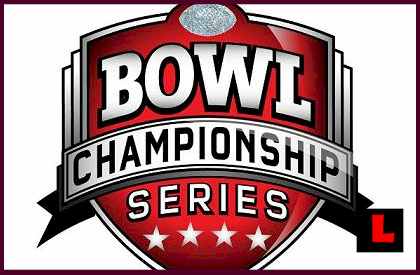Now that we have covered the basic needs and living costs of a student athlete, it is time to jump into what, in my opinion, is the biggest argument for paying the players. The argument is simple: players bring in far more money to their schools than what their scholarships cover and therefore should be receive additional money for their hard work. It would make a lot of sense too, if everything was really just that simple; however, the numbers are far more complicated.
Let’s get one thing out of the way, college football is a profitable business…well, for most schools. Forbes did a great study on profit margins for ND and all BCS conferences to examine just how much profit is being made. Below are the average profits from each conference in just football from 2009-2010:
Big Ten ($10.7m)
SEC ($8.2m)
Big 12 ($7.0m)
ACC ($2.6m)
Pac-10 ($1.8m)
Big East ($982k)
Notre Dame makes over $34 million in profit on it’s football program. Other big individual profit schools are Georgia at over $52 million, Penn State at over $50 million, and Michigan & Florida check in at just over $44 million.
While those are some rather huge numbers, this little tidbit also appears in the Forbe’s ND article:
A report from the NCAA indicates that only 14 Division 1 schools broke even or made money in their athletic department last year without institutional support, and only 6 schools did it in each of the years from 2004-2009. Which means that most of the schools you’ve seen turning a profit in my series have been doing so with the aid of monies from outside the athletic department. For example, University of Virginia and Georgia Tech indicated to me they received upwards of $12 million and $4 million a year, respectively, from student activity fees. That is considered direct institutional support. In fact, the average amount of institutional support received by athletic departments went up from $8m in 2007-2008 to $10.2m in 2008-2009.
So once you place all of the other programs into the financial equation, you have the reality that, overall, schools loose money from their athletic endeavors. 14 schools out of the 120 total in FBS means that just barely over 10% of these schools are turning a profit.
Now, that quote does mention that schools overall do turn profits thanks to “institutional support”. One of the sources mentioned above are student activity fees–yes, that means money that students pay (beyond just their tickets) are going to fill the gap that athletic programs leave. A USA Today study had the following to say on the subject:
[A]s drops in ticket sales, declining endowments and other issues have translated to increased dependence on subsidies at Division I public schools, USA TODAY found in its most recent examination of college athletic finances.
About $1.8 billion in student fees and university funds went to cover gaps in athletic operating costs at those schools last year, the newspaper found. The analysis was based on thousands of pages of inflation-adjusted NCAA athletic data reported since 2005, from open-records requests to hundreds of Division I public schools.
With many states making recession-driven cuts in higher education funding, school subsidies for athletics are starting to become a target. Last week, the Iowa board of regents instructed its three schools to make plans to “substantially reduce or eliminate” support of athletics from tuition and taxpayer dollars; Northern Iowa had been planning to tap booster funds to finance a new deal for Jacobson.
So tuition, student fees, booster funds, and in some cases, even tax dollars all fall under this umbrella of “institutional support” to balance the budget and, just to note, ticket sales and concessions do not fall under this umbrella as they are considered revenue from athletics.
Granted, some schools will likely see a financial boost in upcoming seasons. The Big Ten, SEC, Big XII, and Pac 12 have all inked new TV deals or, in the case of the Big Ten, already have their own network. New independent BYU will have its own TV network as will the Texas Longhorns.
Despite these increases though, we won’t be able to have any hard data on how much this will balance the budget for some schools until a year or two from now. Just because the money is being pumped in, doesn’t mean schools won’t pump it right back out for new facilities or other athletic expenses like say the ever increasing salaries for head coaches and their staff. And don’t think for a second it won’t happen either. More “free money” means more spent to attract recruits and that race will indeed escalate spending so schools can stay competitive.
So on top of all of this, how is it wise to add in new player salaries into the budget? Not to mention, if we are truly paying players that only bring in actual profit, how can the NCAA justify the practice of paying players at only certain schools, and only for one or two sports at most? And if they were to allow such a practice, how do you control and or cap the salaries?
And that’s just the logistical issues off the top of my head. Have fun trying to get a kid go to class and stay academically eligible when they are now making money for playing sports. That’s a whole other Pandora’s Box that will fly wide open.
Not to mention players in the bigger revenue sports already see increased benefits than other athletics. They get more issued gear, they have the nicer facilities, they stay in nicer hotels, they take chartered flights, and, in the case of football, they get to take advantage of free gifts from bowl games. As an example, as just a football manager (that didn’t even work the actual game), I received a free ticket to the Fiesta Bowl, free sweatshirt, free shirt, and a free pair of shorts. I know managers that worked the game got some more stuff, and the players got the full BCS bowl swag package that made my $200-300 gift seem like nothing.
The bottom line though is that the “simple solution” of paying the players simply based on the money they bring in, isn’t that simple at all. With college’s already needing to use additional funding beyond just athletic revenue, the numbers just don’t quite add up and could very well cause college athletics to create a bigger red line on quite a few balance sheets. Athletes in big revenue sports already receive additional benefits; however, the revenue argument alone simply isn’t enough, in my opinion, to be the sole justification of paying the players.


